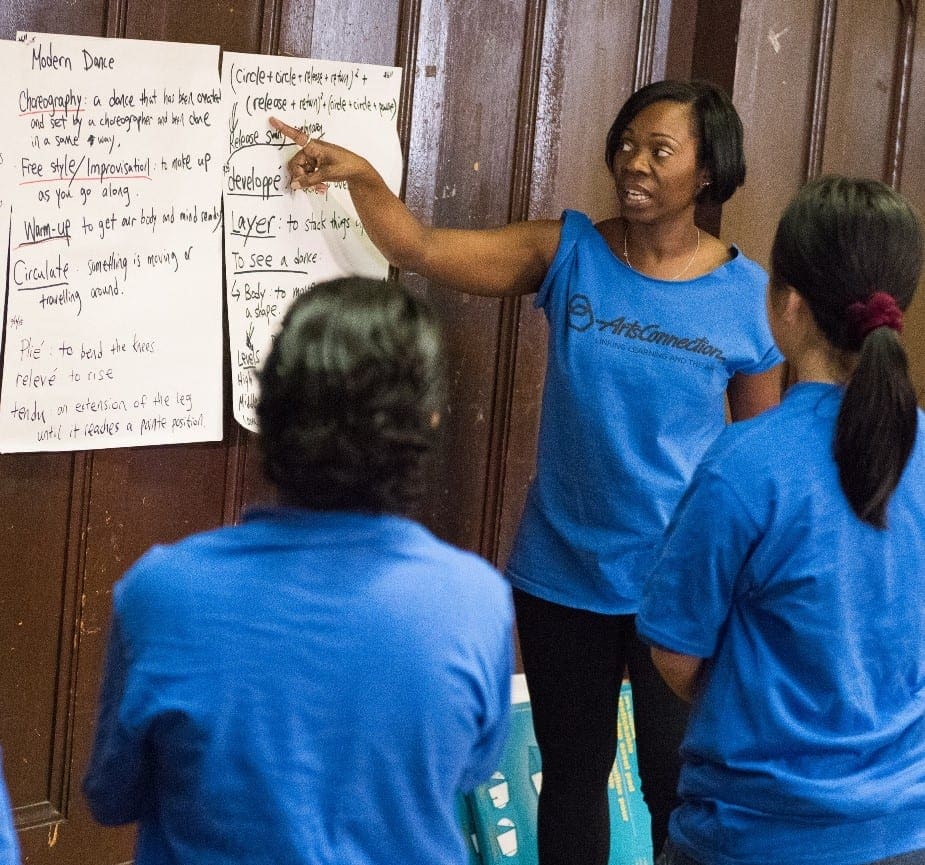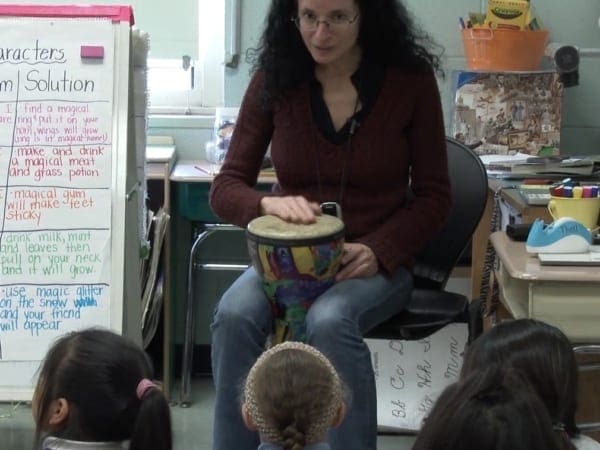Transitions 101
 Try
Try
Make sure you have your students’ attention before providing instructions.
 Try
Try
Utilize transitions to double-check for understanding and to incorporate elements of your lesson. For example, “Move back to your desks as the animal you choose to draw,” or, “Move back to your desks in legato.”
 Try
Try
Let go. While the urge to give reminders might be strong, added reminders might disrupt students’ focus and distract from the transition.
Post an Agenda
Everyone likes to know what to expect and what is coming next. Whether on a Smart Board, chart paper, or a more tangible alternative (like a visual schedule), an agenda can help keep you, the students, and the Classroom Professionals on track. Using visuals to support the agenda can be useful to a wide range of students.

Photo Credit: ArtsConnection Teaching Artist Kim Grier
Tip
Check in with the Teachers to see what tools and techniques they use to help students organize their writing. You can then reinforce those structures when crafting your agendas (e.g., “First,” “Then,” “Next,” “Last”).

Photo Credit: ArtsConnection Bridges program Teaching Artist Rima Fand
Use Music
Music allows you to cue and control the length of a transition. The style and beat can help set the tone for how students transition. You could use instruments like drums, rain sticks, Zen chimes, Buddha bowls, bells, or claves.
If you play a familiar song or section of a song, students will know exactly how long they have to transition. You can also sing or chant a song together while you transition.
Use a Visual Timer or a Visual Countdown System
Timers let students know exactly how much time they have, and anticipate the transition so no one is taken by surprise.
If you are using a Promethean Board, you have a built-in Timer app with different functions, such as a clock, stopwatch, and timer, that can be easily found and used by clicking on the timer icon in the dashboard or main menu. Promethean Board Support for Timer
Explore ideas for online timers: Online Stopwatch Classroom Timers.
Add Movement
Find a way to connect transitioning to your artistry. For example, you can have students move in legato or staccato; transition with twisted movements; or choose a character from your play to move back to their desks. Give students instructions that allow them to do some acting (e.g., “Go to the carpet like a spy; on your tiptoes; in slow motion; like a ninja, etc.”).
Be mindful to choose a movement type that also embodies qualities you wish to see in a successful transition.
Remote Teaching and Learning Tip
Ensure that you are leaving time for and making transitions clear, even in the digital space. For asynchronous lessons, include pauses for responses to reflection questions and to build in time for transitions. For live lessons, be explicit about transitions and give ample time. Use a timer on the screen so students know how long they have left. Assign a student to be a timekeeper to encourage student leadership and modeling.


